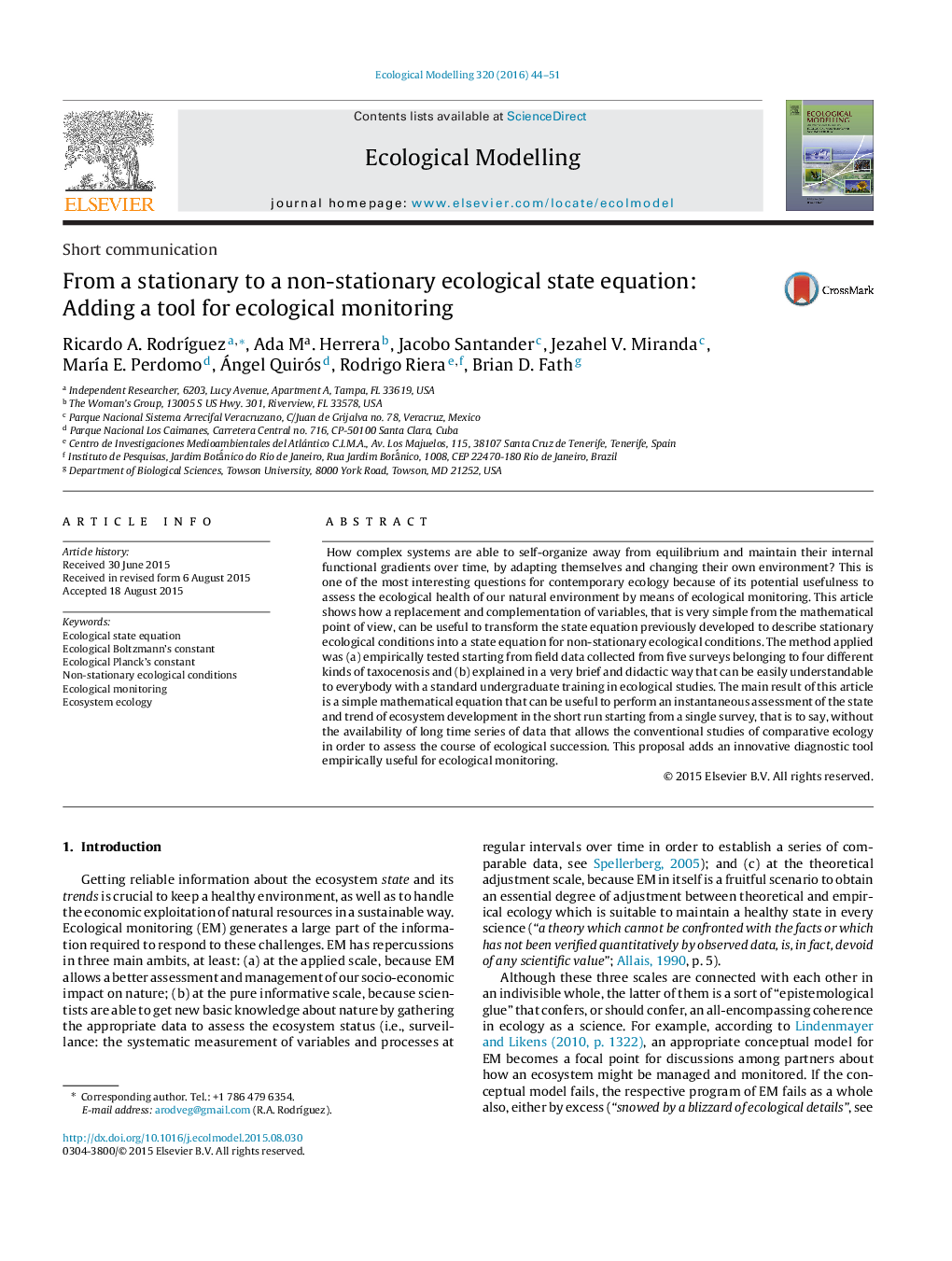| Article ID | Journal | Published Year | Pages | File Type |
|---|---|---|---|---|
| 6296233 | Ecological Modelling | 2016 | 8 Pages |
Abstract
How complex systems are able to self-organize away from equilibrium and maintain their internal functional gradients over time, by adapting themselves and changing their own environment? This is one of the most interesting questions for contemporary ecology because of its potential usefulness to assess the ecological health of our natural environment by means of ecological monitoring. This article shows how a replacement and complementation of variables, that is very simple from the mathematical point of view, can be useful to transform the state equation previously developed to describe stationary ecological conditions into a state equation for non-stationary ecological conditions. The method applied was (a) empirically tested starting from field data collected from five surveys belonging to four different kinds of taxocenosis and (b) explained in a very brief and didactic way that can be easily understandable to everybody with a standard undergraduate training in ecological studies. The main result of this article is a simple mathematical equation that can be useful to perform an instantaneous assessment of the state and trend of ecosystem development in the short run starting from a single survey, that is to say, without the availability of long time series of data that allows the conventional studies of comparative ecology in order to assess the course of ecological succession. This proposal adds an innovative diagnostic tool empirically useful for ecological monitoring.
Related Topics
Life Sciences
Agricultural and Biological Sciences
Ecology, Evolution, Behavior and Systematics
Authors
Ricardo A. RodrÃguez, Ada Ma. Herrera, Jacobo Santander, Jezahel V. Miranda, MarÃa E. Perdomo, Ángel Quirós, Rodrigo Riera, Brian D. Fath,
